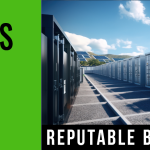 If the blowup over President Trump’s new solar tariff proves anything, it proves that the renewable energy transition is inevitable. A new hydroelectricity project for the City of San Diego, California is a case in point. The city recently raised the level of an existing hydropower dam to hold more water, and now it is considering a massive new energy storage element that would help the grid support more wind and solar power.
If the blowup over President Trump’s new solar tariff proves anything, it proves that the renewable energy transition is inevitable. A new hydroelectricity project for the City of San Diego, California is a case in point. The city recently raised the level of an existing hydropower dam to hold more water, and now it is considering a massive new energy storage element that would help the grid support more wind and solar power.
The project provides support for the view that the new solar tariff is little more than a “speed bump” on the road to more sustainable future. Trump’s tariff is all but certain to disrupt the lives of individual solar workers, business owners and investors to some degree, but the overall impact is beginning to look like more smoke than fire.
Pushing the envelope on US hydropower
You wouldn’t know it from all the buzz over the latest high tech solar cells and wind turbines, but until very recently hydropower accounted for the lion’s share of the nation’s renewable energy pie.
That situation is rapidly changing. With wildlife conservation and environmental impacts in mind, there are few remaining opportunities to construct entirely new hydropower facilities in the US. In fact, this year the US Energy Information Agency expects wind energy to surpass hydropower for the first time ever.
There are still opportunities for growth in hydropower production, though. The US Department of Energy has been experimenting with ways to squeeze more electricity out of existing hydropower dams, and some interesting developments are occurring in the fields of wave energy, tidal energy and low impact hydrokinetic electricity.
It’s also worth noting that the importance of hydropower goes beyond the number of megawatts produced by the nation’s hydropower dams. The US Department of Energy foresees that hydropower provides the kind of stable, on-demand electricity supply that helps balance the variability of wind and solar.





